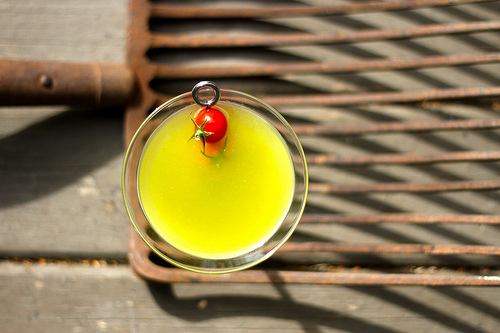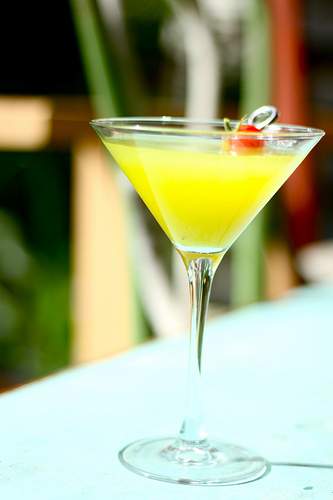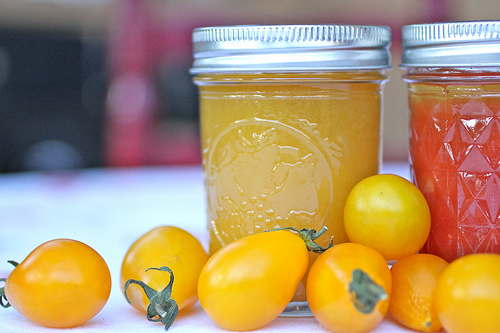canning fresh tomato juice (your bloody mary never had it so good)
 Bloody Mary is a lot like Ragu: no two recipes are alike, yet each is especially, specifically crafted and adhered to by its maker.
Bloody Mary is a lot like Ragu: no two recipes are alike, yet each is especially, specifically crafted and adhered to by its maker.
I am teaching a class at the Pantry at Delancey in a few days, and one thing on the tomato-laden menu is bloody mary's. I confess I am not a huge bloody mary drinker---but apparently A LOT of you out there love a good Bloody Mary. I took a poll with countless friends and neighbors: what ingredient MUST you have in your Bloody Mary? What's the secret sauce? No two answers were the same. Take a look:
- candied bacon
- bacon vodka
- fresh horseradish (not jarred)
- fresh celery juice
- a splash of beer
- pickled okra
- celery bitters
- lots of pepper
- pickled garlic
- dilly beans
- lemon + lime juice
For a newbie to the realm of Bloody Marys, I figured: fresh is best. And why wouldn't I use freshly strained yellow tomato juice? Then serve it up? I had all sorts of plans for adding fresh basil and muddled horseradish, Tabasco and Worcestershire. My celery bitters were on hand and I had pickled asparagus in the fridge. And though I enjoyed my versions (especially the candied bacon), I realized that your Bloody Mary is like an Italian Mother's Ragu: customized to you, with all the love and trimmings, unlike any other and lets be honest: Italian children are loyal to their mother's recipe.
My not-so-bloody Mary will have just-strained yellow tomato juice. For a Bloody Mary today, just strain juice from tomato peels and pulp. But you can also preserve summer's tomato juice for year-round Bloody Marys (I just made your day, right?):

[yellow] Tomato JUICE.
Note: this is a hot pack recipe.
Seeds and peels from processing (yellow or red) tomatoes; put in strainer and use back of ladle to press as much juice into bowl as possible. Boil one minute---add citric acid and tomato juice to sterilized hot jars, wipe rims, add lids---and process in hot water bath for 35 minutes for pints, 40 minutes for quarts.*
OR process with dial gauge pressure canner at 11 LBS for 15 minutes, OR a weighted gauge at 10 LBS for 15 minutes.
You can also: wash tomatoes, remove stems, trim off bruises and roughly chop. Heat to boil in pot, crushing and stirring. Boil for 5 minutes, strain then bring juice back to a boil. Add citric acid and tomato juice to sterilized hot jars, wipe rims, add lids---and process in hot water bath: 35 minutes for pints, 40 minutes for quarts.**

A random note so I can talk more about tomatoes: tomatoes are a little persnickety.
Tomatoes/tomato juice/pulp may separate from water inside your processed jars. It looks like a cool chemistry experiment, yet remains natural and safe. There are ways to keep the tomatoes uniform: managing the temperature. For example: the Crushed Tomato Recipe (coming soon) doesn't tend to separate since the tomatoes stay 'hot' the entire time they are processing. However, when I make whole canned tomatoes, I often remove skins and cores from a whole box of tomatoes---and the tomatoes cool off. Even though I add the tomatoes to hot jars with hot water or tomato juice (this is called a 'cold pack' since cold tomatoes get packed into hot jars/hot liquid), the temperature differential will likely cause that water/tomato separation. I don't sweat it. But if you want your jarred tomatoes to be uniformly tomatoes: blanch tomatoes, take off skins and quickly get them into hot jars with hot liquid and straight into the water bath. Hot hot hot!

For non-separating tomato juice: get just a portion of the tomatoes in the pot and boiling, then cut and keep adding tomatoes while maintaining a boil. Once all the tomatoes are in the pot, boil for 5 extra minutes. Extract juice, bring juice back to a boil then process according to recipe, above.
Now THAT was a lot of Talk of Tomatoes.
*Recipe via Canning for a New Generation by Liana Krissoff
** instructions via So Easy to Preserve, Cooperative Extension The University of Georgia